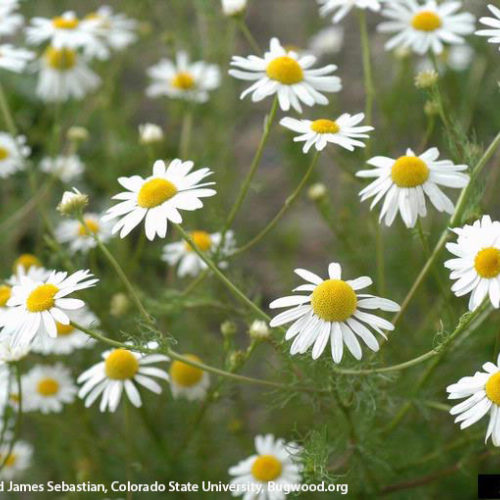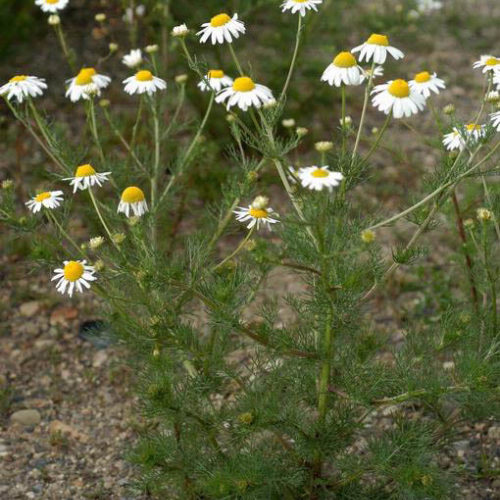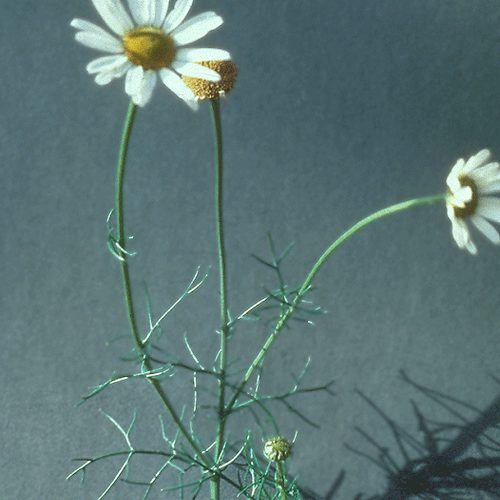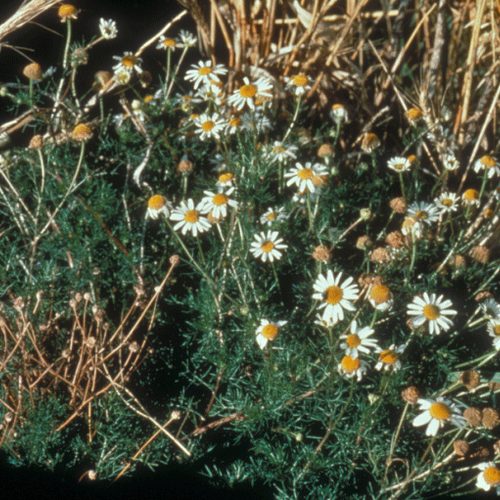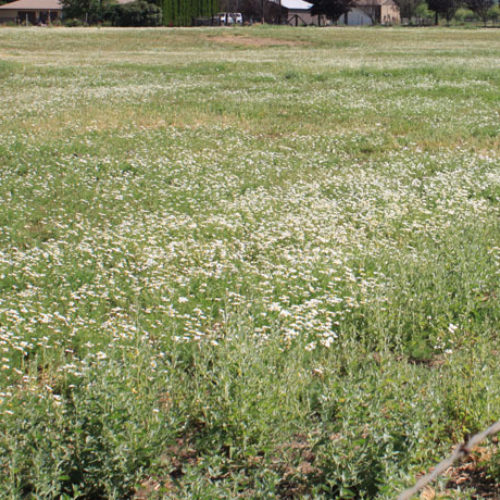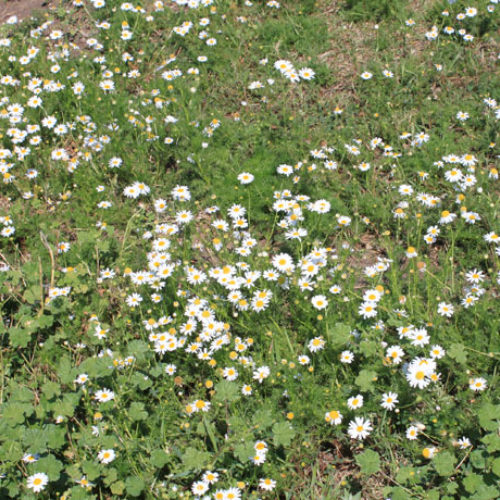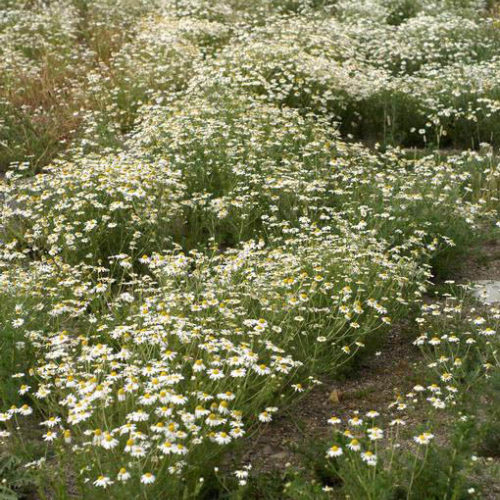Scentless Mayweed
Matricaria perforata
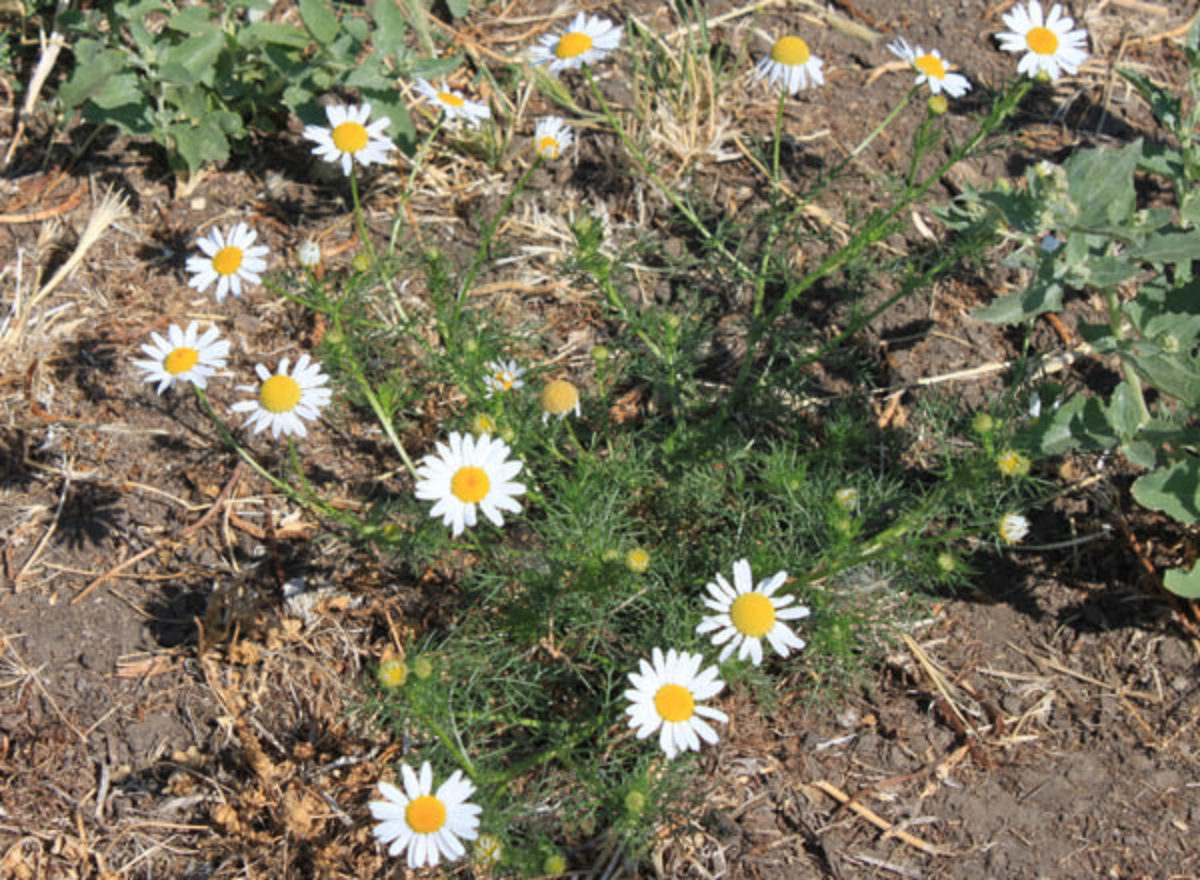
Family: Asteraceae
Other Scientific Names:
Tripleurospermum inodorum
Other Common Names: scentless chamomile
Weed class: C
Year Listed: 1989
Native to: Asia and Europe
Is this Weed Toxic?:
not known to be
Why Is It a Noxious Weed?
It is able to invade cultivated fields and prevent the harvest of small grains. Its spread can go unnoticed due to its similarity to Anthemis arvensis (corn chamomile, dog fennel or mayweed) another common weed. It may also spread as a seed contaminant.
How would I identify it?
General Description
Scentless mayweed is an annual to short-lived perennial with upright stems reaching 6 inches to 3.25 feet tall. Its leaves are dissected with narrow segments and daisy-like flowers bloom generally summer through early fall.
Flower Description
Flowerheads are solitary at stem ends, have overlapping rows of bracts at their base and have two types of flowers: ray flowers which are white and look like a daisy petal and disk flowers which are yellow and compact, forming the ‘daisy center’.
Leaf description
Leaves are alternately arranged and dissected into narrow, thread-like segments. They are essentially odorless when crushed.
Stem description
Stems are upright and smooth and have branching.
Fruit Seed Description
Seeds are dark brown and have 3 ridges on one side.
May Be Confused With
Beside Anthemis arvensis (corn chamomile, dog fennel or mayweed), oxeye daisy may also be mistaken for scentless mayweed. For plant identification assistance please contact your county noxious weed coordinator.
Where does it grow?
It grows along roadsides, fence lines, waste areas, in perennial forage crops, cultivated fields and particularly on heavy soils. Please click here to see a county level distribution map of scentless mayweed in Washington.
How Does it Reproduce?
Scentless mayweed reproduces by seed. Each plant can produce up to 300,000 seeds.
How Do I Control It?
General Control Strategy
Where possible, prevent introduction of scentless mayweed into areas by cleaning road equipment and other equipment stored in infested fields. Prevent new populations from going to seed to prevent costly future control efforts.
Mechanical Control
Plants may be mowed to slow flower production, but plants may still grow and form more flowers below the cut height. Small infestations can be hand pulled.
Cultural Control
Establishing competitive plants can crowd out scentless mayweed plants.
Herbicide Control
Please refer to the PNW Weed Management Handbook, or contact your county noxious weed coordinator.
For More Information
See our Written Findings for more information about scentless mayweed (Matricaria perforata).
APHIS Weed Risk Assessment of scentless mayweed.



